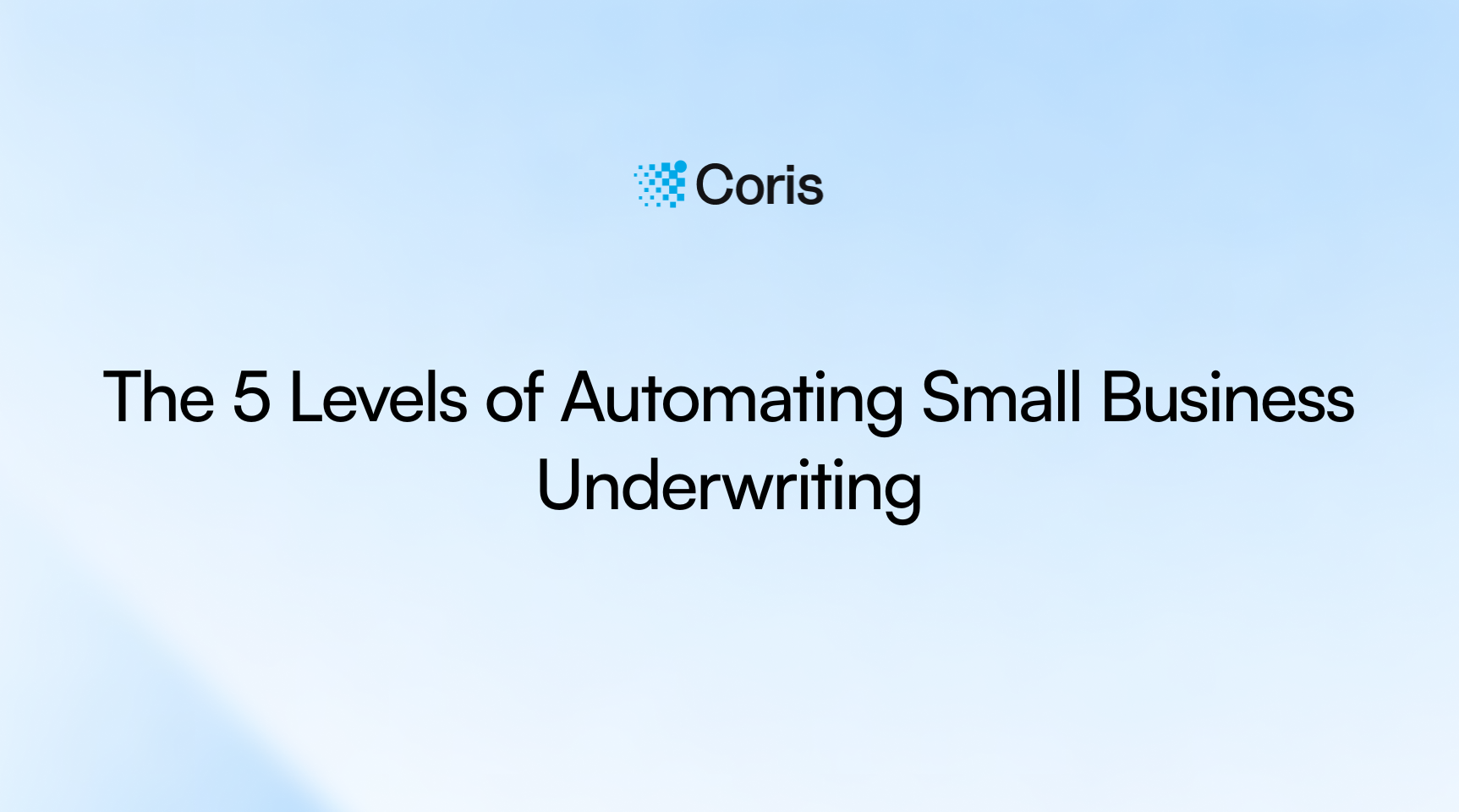Stop Risky Merchants with Automated Underwriting in 2025
Learn how automated merchant underwriting tools stop risky merchants, reduce fraud, and help you scale your platform safely in 2025.
Discover the five levels of automation in small business underwriting — from manual reviews to AI-driven systems — and how Coris helps companies achieve Level 5.

Small business underwriting has evolved dramatically over the years.
From traditional manual processes to highly sophisticated risk monitoring systems, the underwriting industry has come a long way. With the recent advancements in generative AI and machine learning, the potential for automating the underwriting process has become a reality.
In this post, we'll discuss the five levels of automation in small business underwriting over the past few decades, starting from the most basic to the most advanced:
In the early days, everything was done manually using pen and paper – or more recently, PDF documents received via email.
This was highly unproductive, prone to errors, and not scalable. As a result, merchants had to wait for days or even weeks to know the fate of their applications.
Surprisingly, some companies still use this method today.
In the 1980s and 1990s, companies started using basic "if-then" rules based on expert opinions to automate the decision-making process.
While this introduced some level of automation, the rules were static and inflexible, leading to a low shelf life and frequent false declines.
In the early 2000s, companies began building basic regression models.
These models were mathematical equations developed by looking back at the performance data of past decisions. Although automated, these models were not very accurate, leading to a lot of false declines. New models and refreshes relied on engineers to develop new features – taking months or even years to deploy.
Most small banks still use this method today.
Machine learning and data science became hot buzzwords in the late 2010s. Data scientists started building supervised machine learning models to predict the behavior of merchants, which were then used to approve or deny applications.
These models were more accurate, used more sophisticated features, and were automated – but they still faced some limitations. For instance, it was still difficult to harness the value of unstructured data (photos, text, maps, etc.), and risk teams still required data scientists to develop and deploy models. To an extent, explainability of decisions was still an issue so CS folks struggled to explain to customers the rationale behind decisions.
And though the overall process was more efficient than with a basic regression model, there still existed a latency between “bad” outcomes and how soon the models learned from them.
Fintechs and large banks still use this method today.
This is the ultimate goal for underwriting and risk monitoring. At this level, man and machine collaborate seamlessly to drive optimal outcomes. An unsupervised model learns the features of a merchant from both structured and unstructured data and corrects itself based on inputs and corrections from human beings and the outcomes over time. Similar to how self-driving cars are expected to perform, the models learn instantly, without the need for human intervention.
Ultimately, this gives risk analysts the freedom to focus on more important tasks.
This level of automation combines the speed of machines with the intuition and intelligence of humans, making it the ideal solution for the risk and underwriting industry, where there are too many nuances and contexts for machines to know or learn.
At Coris, we're helping companies operate at Level 5. We pair next-gen AI infrastructure with human intuition, providing an advanced and efficient way to automate small business underwriting and risk monitoring.